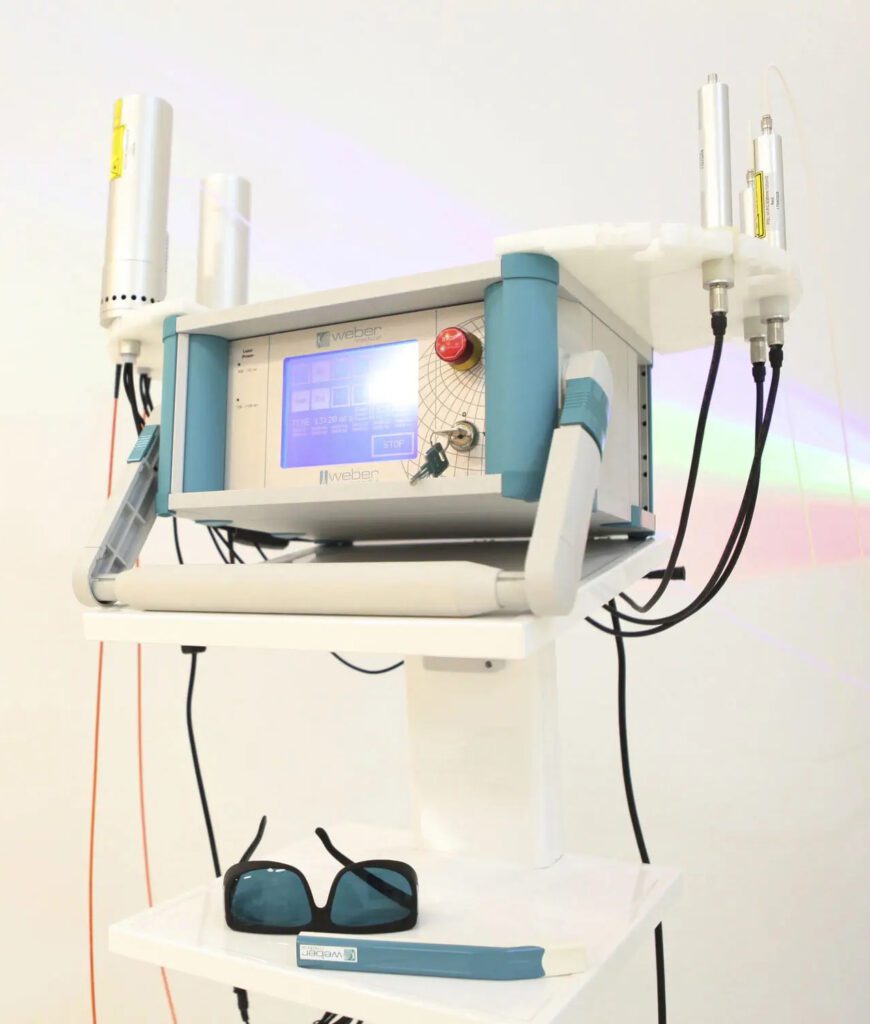Subtotal $0.00

Swiss Health Clinic AG
Stauffacherstr. 36
CH-8200 Schaffhausen
Shopping cart
- Phone:+41 (52) 56030-00
- Email:info@swiss-health-clinic.ch

Swiss Health Clinic AG
Stauffacherstr. 36
CH-8200 Schaffhausen

Photodynamic Therapy (PDT) represents a groundbreaking approach in both dermatology and cancer treatment, offering a promising avenue in the realm of alternative therapies. Essentially, PDT, also referred to as laser light therapy, involves the utilization of photosensitizers—specific substances that sensitize tumor cells to light.
By harnessing the power of light, PDT aims to eliminate malignant tumor tissue while sparing healthy cells, making it a promising treatment modality in the fight against cancer.
Photodynamic Therapy (PDT) operates on a unique mechanism of action that involves the use of photosensitizing agents and specific wavelengths of light to target and destroy cancerous or precancerous cells. The process begins with the administration of photosensitizing agents, either orally, intravenously, or topically, depending on the type and location of the targeted tissue. These agents are selectively absorbed by the cancer cells.
Upon activation by light of a specific wavelength, typically emitted by lasers or light-emitting diodes (LEDs), the photosensitizing agents react with oxygen molecules in the vicinity, generating highly reactive oxygen species. These reactive oxygen species induce oxidative damage to cellular components, leading to apoptosis (programmed cell death) of the cancer cells. Additionally, PDT can disrupt tumor vasculature, impeding blood supply to the tumor and further contributing to its destruction.
The precise mechanism of PDT ensures targeted destruction of cancerous tissue while sparing surrounding healthy cells, thereby minimizing adverse effects and preserving tissue integrity.
Photodynamic Therapy (PDT) is typically conducted on an outpatient basis. The procedure involves several sequential steps: initial preparation may entail avoiding sunlight and certain medications to increase sensitivity to light, followed by the administration of a photosensitizing agent orally, intravenously, or topically, allowing time for accumulation within cancerous cells. Subsequently, light of a specific wavelength is applied to the targeted area, activating the photosensitizer and instigating the destruction of cancer cells. Post-treatment care involves managing light sensitivity and potential side effects such as redness or swelling, with follow-up appointments arranged to monitor progress and address any concerns.
PDT is generally well-tolerated, with minimal side effects. Its targeted approach ensures destruction primarily in tumor cells, minimizing impact on healthy tissue.
PDT can be seamlessly integrated with other treatment methods, offering a comprehensive approach to cancer management.
With destroyed cells being replaced by normal tissue post-treatment, PDT often results in a favorable healing process.
PDT can be targeted precisely, minimizing damage to surrounding healthy tissue, and often results in little to no scarring.
PDT is indicated in a variety of conditions, including but not limited to
Additionally, PDT has shown efficacy in treating bacterial, fungal, and viral infections, further expanding its therapeutic potential.